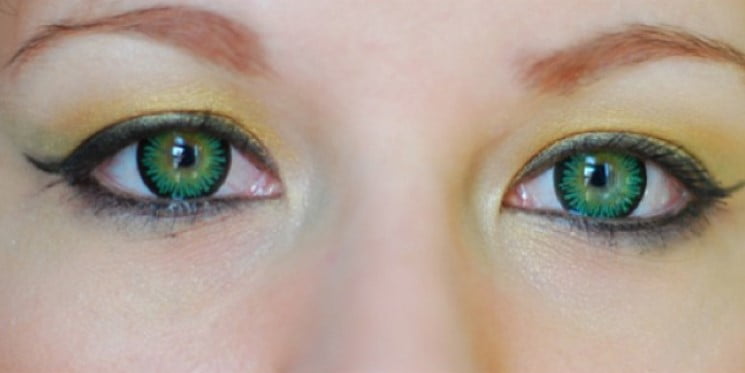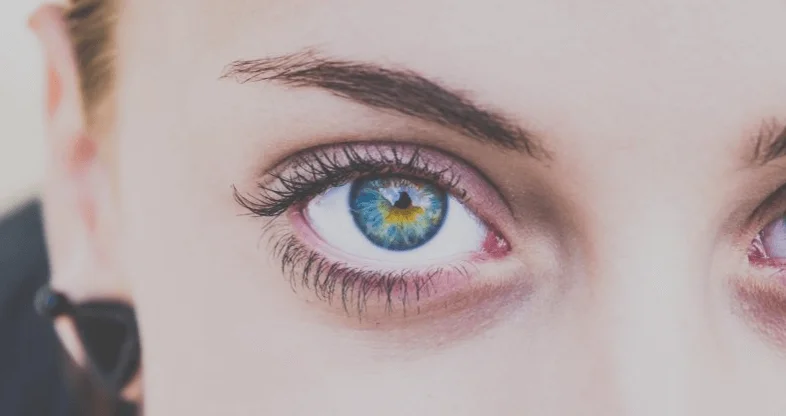The human eye is a remarkable organ that plays a vital role in our perception of the world. Furthermore, as the primary sense organ responsible for vision, our eyes enable us to navigate our surroundings, appreciate the beauty of nature, and engage in various activities. Additionally, beyond their aesthetic appeal, eyes are intricate structures with fascinating capabilities and unique characteristics. We will explore a collection of intriguing facts about eyes that highlight their complexity and significance. From their evolutionary development to their astonishing visual acuity.
Interesting Facts About Eyes

Image Source: Instagram @eyes.facts
The human eye is an extraordinary and intricately designed organ. How well do we truly understand its workings? We depend on our eyes constantly, yet we often overlook their remarkable nature until our vision falters. To shed light on this topic, we present you with interesting facts about eyes that might surprise you.
- Over 2 million functional parts make up the extremely complicated eyes. Each individual eye contains 107 million cells that are light-sensitive and work together to enable us to see.
- Our eyes are amazing! They can distinguish between approximately 10 million different colours, which allows us to see and appreciate the beauty of the world around us.
- Each year, a human being blinks their eyes approximately 4,200,000 times. This means that if someone were paid a nickel for every blink, they would make $210,000 annually.
- Did you know that the average diameter of the human eye is approximately one inch, and it weighs about 0.25 ounces? Although small, these organs play an enormous role in our daily lives.
- Pirates believed that wearing earrings would improve their vision. While there is no scientific evidence to support this claim, it’s an interesting tidbit about pirate lore.
- The night vision of tigers is six times better than that of humans due to their uniquely shaped eyes that allow them to see clearly in low-light conditions.
- The human eye houses the fastest muscle in our body. Consequently, we often employ the phrase “in the blink of an eye” to portray events that unfold rapidly.
- Some people experience emetophobia, a fear of the eyes, which can cause extreme anxiety and discomfort when faced with situations that involve the eyes.
Amazing Facts About Eyes
- Given the appropriate circumstances and lighting, humans possess the remarkable ability to detect the flicker of a candle from a distance of 14 miles.
- When someone has heterochromia, it means their eyes have two different colours.
- Despite what some people may believe, the structure of your eyeball ensures that contact lenses cannot get “lost” behind your eye.
- Your eyes start developing a mere two weeks after conception.
- While our noses and ears continue to grow throughout our lives, our eyes maintain the same size from birth.
- All newborn babies are unable to perceive colours.
- Males are more commonly found to have colour blindness.
- When a newborn baby cries, they do not produce tears. Tears only start to form around the age of six weeks.
- Newborn babies can see objects most clearly when they are about 8-15 inches away.
- On average, you blink about 4.2 million times in a year.
- We have two eyeballs to help us judge distances better – comparing two images helps us figure out how far an object is from us.
- Eyes have a speedy healing process. Moreover, with proper care, a minor scratch on the cornea can repair itself in about 48 hours.
- Brown eyes are the most prevalent eye colour worldwide.
- Experts believe that the first person with blue eyes lived 6,000-10,000 years ago.
- Even if nobody in your recent family had blue or green eyes, these traits can still appear in later generations as they are recessive.
- People with blue eyes all share a common ancestor with each other.
- During an eye test, the optometrist can detect health conditions like diabetes and high blood pressure.
- Diabetes is the leading cause of blindness in adults in the UK.
Fun Facts About Eyes You Should Know
- Eyes are believed to have first appeared in animals approximately 550 million years ago.
- Interestingly, it’s your brain, not your eyes, that actually enables you to see. Similar to a camera, your eyes capture light and send information back to the brain.
- Surprisingly, the images you see are initially upside down, and it’s your brain that flips them to the correct orientation.
- It’s possible to blink up to five times in just one second.
- You tend to blink more frequently when you’re talking.
- The eye is the fastest muscle in your body, which is why we use the phrase “in the blink of an eye” for quick events!
- On average, a blink lasts around 100-150 milliseconds.
- Your eyes can function at full capacity without needing any rest.
- The phenomenon of red-eye in photos happens because light from the flash reflects off the tiny blood vessels in your eyes.
- If the human eye were a digital camera, it would possess a whopping 576 megapixels.
- People without sight since birth are capable of visualizing their dreams, given certain conditions.
- Approximately 80% of our memories are influenced by visual experiences.
- The cells within your eyes are the only ones that persist from birth until death.
- The average lifespan of eyelashes is around five months.
- If you were to line up all the shed eyelashes in one person’s lifetime, they would stretch approximately 98 feet.
- Eyelashes play a crucial role in protecting our eyes from dirt and debris.
- Unbeknownst to many, harmless microscopic organisms reside in our eyelashes.
- Your eyebrows serve as a barrier, preventing sweat from trickling into your eyes.
- The space between your eyebrows is referred to as the Glabella.
- It is not possible to sneeze while keeping your eyes open.
Fascinating Facts

Image Source: Instagram @eye_facts_
- Where the retina and optic nerve converge in our eyes, there are tiny blind spots. By using data from the second eye, the brain fills in these gaps.
- Smoking impairs one’s ability to see at night.
- Our eyes are protected by a hollowed-out eye socket.
- Around 80% of vision impairments can be treated or resolved globally.
- Our eyes are incredibly complex, with about 2 million working components.
- The weight of an average eyeball is about 28 grammes.
- The most active muscles in our body are those that regulate our eyes.
- Because the optic nerve is so sensitive, eye transplants are currently not an option.
- One eye is significantly more dominant than the other in each individual.
- Ommatophobia, a fear of eyeballs, affects some people.
- The muscles of our eyes possess extraordinary power, exceeding the necessary strength for their function by 100 times.
- The second most complex organ, after the brain, is the eye.
- One-sixth of the human eyeball is all that can be seen.
- Our eyes can process an astonishing 36,000 pieces of information in a single hour.
- Our eyes will see a remarkable 24 million different pictures in a lifetime on average.
- Red, blue, and green are the only fundamental colours that the human eye can distinguish. These are the base colours for all other colours.
- 500 different colours of grey can be distinguished by our eyes.
- The iris and pupil are protected by the cornea, which is translucent.
- The circular, flat, and thicker middle lens is directly behind the pupil.
- When we sense danger, our eyes involuntarily close to protect us.
READ ALSO: Hilarious Human Body Fun Facts You Never Knew
Animals Eyes
Here are some interesting facts about the eyes of animals:
- Moreover, the multiple lenses of dragonflies’ eyes not only enable them to detect movement but also provide them with protection against predators.
- The fish with four eyes has simultaneous vision in the water and the air.
- Snakes have only a thin layer covering their eyes rather than eyelids.
- Because their pupils are rectangular, goats have a larger field of vision.
- The only bird species that can perceive blue hues is the owl.
- Hamsters frequently only blink one eye at a time.
- The eyes of guinea pigs are always open at birth.
- Worms have absolutely no eyes.
- Owls are able to see moving mice from a distance of more than 150 feet away.
- To spot predators, scallops have about 100 eyes along the edge of their shells.
- Box jellyfish have 24 eyes, whereas scorpions can have up to 12 eyes.
- Camels have three eyelids and lengthy eyelashes to shield their eyes from dust and other desert detritus.
- Five eyes make up a bee.
- Chameleons have the ability to independently move each eye so they can simultaneously view in two separate directions.
- Even in low light, geckos have significantly better colour vision than humans.
- The only body portion lacking blood vessels is the cornea of the human eye.
- Dolphins slumber while keeping one eye open.
- With an eye that is around 27 cm broad, the Colossal Squid possesses the biggest one in the entire globe.
- Snakes have two sets of eyes, one for vision and the other for heat and motion detection.
- Being the only species of bird capable of seeing the colour blue, owls stand out.










